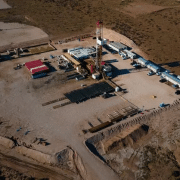⚠️ IMPORTANT LEGAL DISCLAIMER:
The information provided on this page is for general informational purposes only and does not constitute legal, financial, or investment advice. Oil and gas laws, mineral rights regulations, and royalty structures vary significantly by state and jurisdiction. While we strive to provide accurate and up-to-date information, no guarantee is made to that effect, and laws may have changed since publication.
You should consult with a licensed attorney specializing in oil and gas law in your jurisdiction, a qualified financial advisor, or other appropriate professionals before making any decisions based on this material. Neither the author nor the publisher assumes any liability for actions taken in reliance upon the information contained herein.
The world of investments is vast, with opportunities spanning various industries. One lesser-known yet lucrative option for investors is putting money into Overriding Royalty Interests (ORRIs), particularly in regions with a robust history of energy production like Texas. In this comprehensive guide, we’ll delve into the intricacies of investing in ORRIs, exploring what they are, how they work, the potential advantages and risks, and crucial considerations for those eyeing a slice of the energy wealth.
Understanding Overriding Royalty Interests
Before delving into the investment potential, let’s establish a solid understanding of what Overriding Royalty Interests entail. An ORRI is essentially a share of the revenue generated from the extraction and production of minerals, such as oil and natural gas, from a specific piece of land. Unlike traditional royalties, ORRIs “override” the rights of the working interest owner, entitling the holder to a portion of the income generated, irrespective of property ownership.
Typically expressed as a percentage (e.g., 1% or 3%), the ORRI is calculated based on the gross proceeds from the sale of extracted minerals. This interest is often granted to individuals or entities other than the property owner, such as geologists, drilling companies, or industry professionals.
Mechanics of Overriding Royalty Interests
To grasp how ORRIs function, consider a scenario in the oil-rich landscapes of Texas:
- A landowner leases their land to an oil and gas company for drilling and extraction.
- The lease agreement outlines terms, including royalty rates shared between the landowner (lessor) and the company (lessee).
- Suppose the landowner and company settle on a 20% royalty rate, meaning the landowner gets 20% of mineral revenue.
- Now, assume an investor holds an overriding royalty interest of 3% on this property. This entitles them to 3% of the gross revenue, in addition to the landowner’s 20% royalty.
- The remaining 77% of the revenue goes to the drilling company as the working interest.
Investors with ORRIs benefit from mineral extraction without dealing with operational costs or day-to-day activities, making it an enticing prospect for those seeking passive income.
Advantages of Overriding Royalty Interests
Investing in ORRIs offers several advantages for individuals looking to diversify their portfolios:
Passive Income Stream: ORRI holders enjoy a steady income stream without actively participating in operations, making it an attractive source of passive income.
Minimal Operational Responsibilities: Investors are not burdened with operational activities, expenses, or risks associated with drilling and production, minimizing involvement and risk exposure.
Potential for Profit: Regions like Texas, with a history of successful oil and gas production, offer potential for significant profits, attracting investors to the energy sector.
Challenges and Risks
While ORRIs present enticing advantages, investors should be aware of potential challenges and risks:
Market Volatility: The oil and gas industry is prone to price volatility, impacting ORRI profitability and income generation due to fluctuating energy prices.
Lease Terms and Royalty Rates: Unfavorable lease terms or royalty rates negotiated between the landowner and drilling company may reduce potential income for ORRI investors.
Environmental and Regulatory Concerns: Compliance with complex and evolving regulatory frameworks at federal, state, and local levels, along with addressing environmental concerns, poses challenges for ORRI owners.
Key Considerations for Investors
For those eyeing ORRIs as an investment opportunity, careful consideration is paramount:
Lease Negotiations: Thoroughly review and negotiate lease agreements to ensure favorable terms, royalty rates, and protection of investor interests. Professional guidance is invaluable in this process.
Legal and Tax Implications: Navigate the complex legal and tax aspects associated with ORRI ownership by seeking professional guidance. Understand the unique implications and potential tax benefits.
Due Diligence: Conduct comprehensive due diligence before investing. Evaluate profitability potential, stability of the drilling company, and environmental and regulatory factors impacting the investment.
ORRIs vs. Working Interests: Distinguish between overriding royalty interests (ORRIs) and working interests (WIs). While ORRIs offer passive income, WIs involve active participation in operations, bearing operational costs and risks.
Investing in Overriding Royalty Interests proves to be a compelling option for those seeking a slice of the lucrative energy sector. While it offers passive income and profit potential, investors must navigate market volatility, lease terms, and regulatory complexities. With careful consideration, thorough due diligence, and professional guidance, investors can unlock the wealth potential of ORRIs and contribute to the dynamic landscape of the energy industry.
If you have further questions related to the topic, feel free to reach out to us here.











